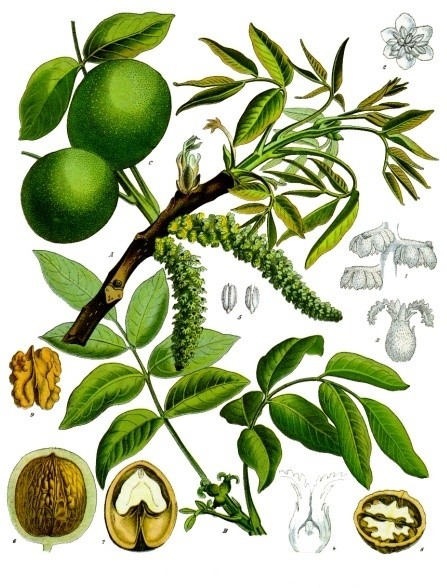The foliage of walnuts contains a lot of tannic acid. This makes the thick walnut leaves very difficult to decompose. When composting, there are significant problems if you add a lot of foliage at once, and the resulting compost is not optimal for the other plants and tends to inhibit growth.

Where to put walnut leaves?
In principle, you can of course compost walnut leaves. If you have a lot of space, put them in an extra composter. Together with other waste you could get acidic substrate for bog plants. Rhododendrons, hydrangeas, heathers and other woodland plants will be happy with it. But you must not throw the leaves in thick layers on the compost. They will not rot in masses. Alternate filling in loose material along with the walnut leaves. Before you lose patience: the rotting takes much longer to decompose.
The “normal” perennials and summer flowers, but also bulbous plants do not like acidic soil. Here, you must not use compost with walnut leaf content in any case. So if you don’t have enough space to compost the walnut leaves separately, better throw them in the residual waste or organic waste garbage can. Or take them to a recycling center.
Here’s another tip from a reader: she simply buried the walnut leaves in a new raised bed. Covered the bed with fresh soil, then stretched a mulch sheet completely over it and planted rhododendrons and grasses in a few holes in the sheet.
What grows under nut trees?
Harmful or even poisonous nut trees are not. After all, they grow in nature and do not prevent other plants from settling. Often, wild perennials and grasses thrive right in the crown eaves and spread up to the trunk. There are many woodland grasses such as sedges, turfgrass, and wood rush that are very comfortable in the root zone of trees. Try ferns too, as they really like acidic soils and shade.
If you want to improve the soil under your walnut tree, you can gently work normal compost (tannic acid free!) into the eave area. Be careful not to hurt any roots. By the way: oak leaves contain just as many tannins as walnut leaves. Therefore, the same applies to oaks as to walnut trees. They also rot poorly and should either be disposed of separately or placed in an extra compost bin.









